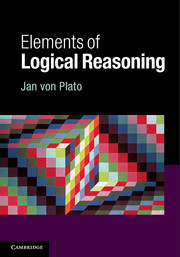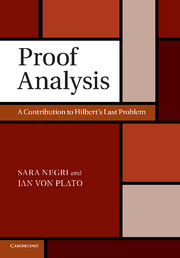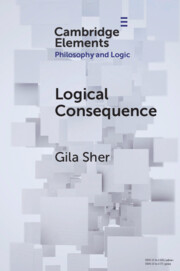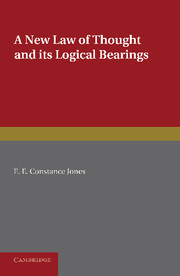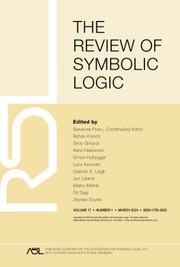Elements of Logical Reasoning
Some of our earliest experiences of the conclusive force of an argument come from school mathematics: faced with a mathematical proof, we cannot deny the conclusion once the premises have been accepted. Behind such arguments lies a more general pattern of 'demonstrative arguments' that is studied in the science of logic. Logical reasoning is applied at all levels, from everyday life to advanced sciences, and a remarkable level of complexity is achieved in everyday logical reasoning, even if the principles behind it remain intuitive. Jan von Plato provides an accessible but rigorous introduction to an important aspect of contemporary logic: its deductive machinery. He shows that when the forms of logical reasoning are analysed, it turns out that a limited set of first principles can represent any logical argument. His book will be valuable for students of logic, mathematics and computer science.
- Includes a unique historical survey of deductive systems from Aristotle to modern times
- Provides an introduction to the deductive machinery of metalogic
- Reveals a set of first principles for representing logical arguments
Reviews & endorsements
'Elements of Logical Reasoning fills a gap by providing some much needed explanation and motivation to an otherwise dry literature.' Henry Towsner, The Mathematical Intelligencer
Product details
January 2014Paperback
9781107610774
271 pages
246 × 173 × 13 mm
0.56kg
Temporarily unavailable - available from TBC
Table of Contents
- Part I. First Steps in Logical Reasoning:
- 1. Starting points
- 2. Rules of proof
- 3. Natural deduction
- 4. Proof search
- 5. Classical natural deduction
- 6. Proof search in classical logic
- 7. The semantics of propositional logic
- Part II. Logical Reasoning with the Quantifiers:
- 8. The quantifiers
- 9. Derivations in predicate logic
- 10. The semantics of predicate logic
- Part III. Beyond Pure Logic:
- 11. Equality and axiomatic theories
- 12. Elements of the proof theory of arithmetic
- Part IV. Complementary Topics:
- 13. Normalization and cut elimination
- 14. Deductive machinery from Aristotle to Heyting.

